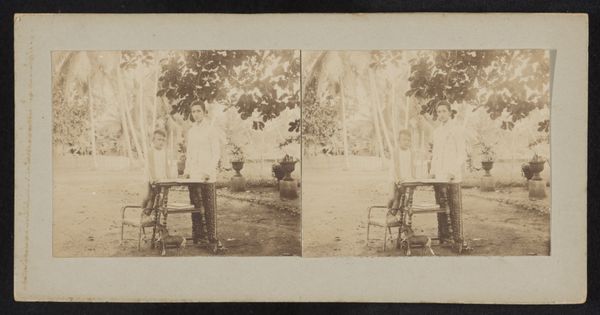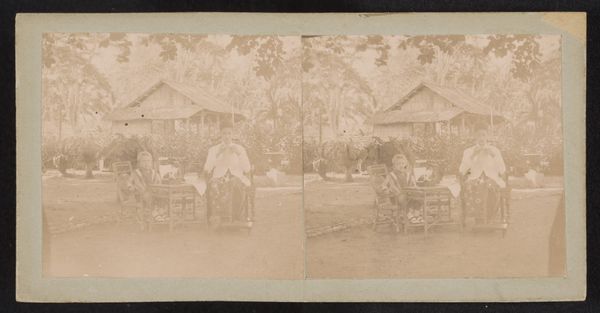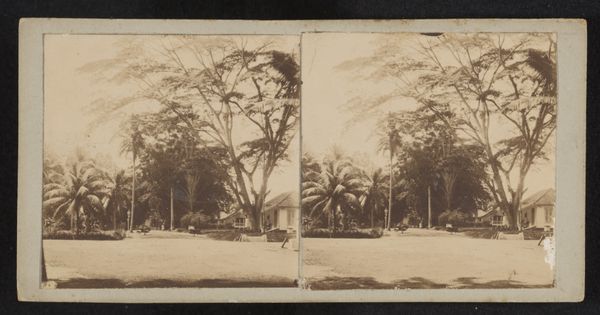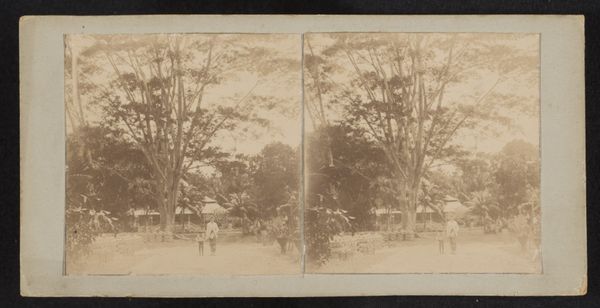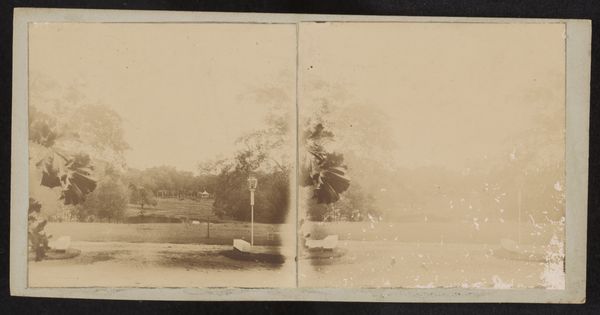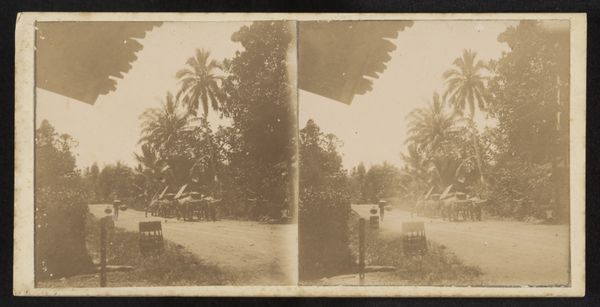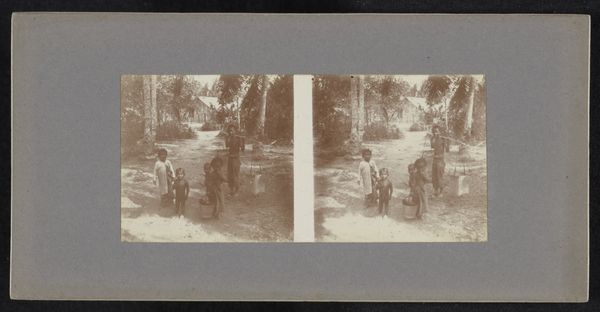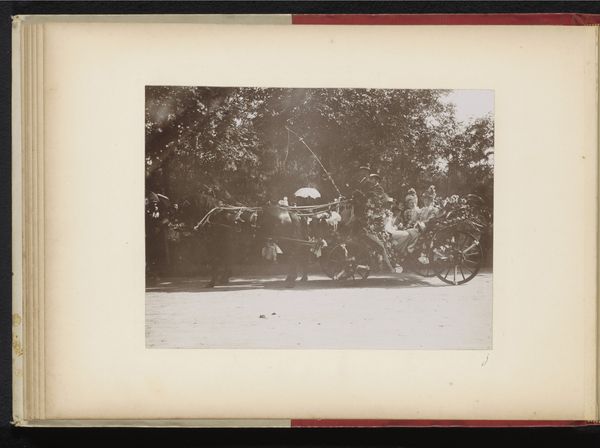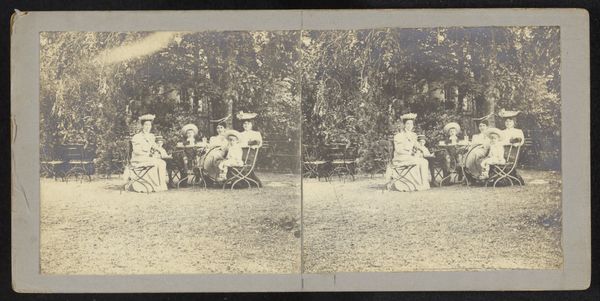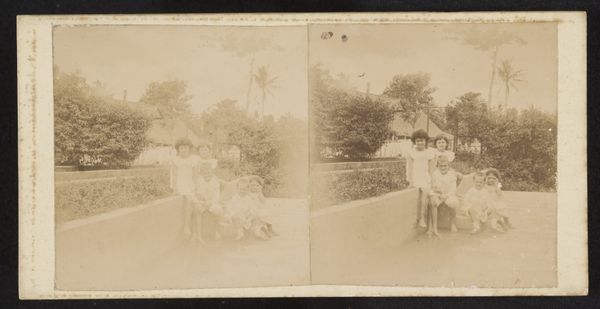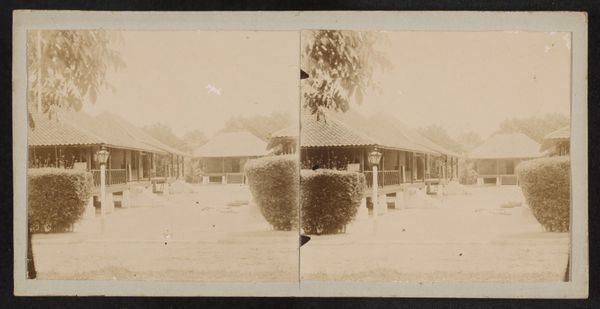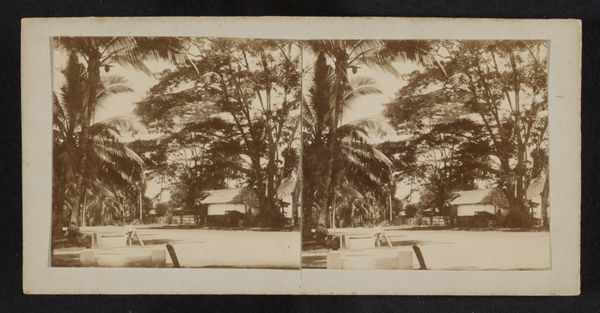
photography, gelatin-silver-print
#
portrait
#
landscape
#
photography
#
orientalism
#
gelatin-silver-print
Dimensions: height 80 mm, width 80 mm, height 88 mm, width 178 mm
Copyright: Rijks Museum: Open Domain
Curator: This gelatin-silver print, entitled "Two Men in the Garden of an Engineering Residence" is attributed to Robert Julius Boers and thought to have been taken between 1900 and 1922. It now resides here at the Rijksmuseum. What strikes you about this sepia photograph? Editor: A profound stillness. The tropical light bleeds almost all the color, draining any real sense of liveliness, making everything look a little… spectral. There’s almost something eerie, in fact, to see these figures preserved but somehow devoid of real presence. Curator: Interesting that you describe it as spectral. Gelatin-silver prints were prevalent at the turn of the century precisely because of their tonal range, allowing for detailed capturing in commercial photography, mass reproduction and dissemination. Its reproducibility certainly has societal implications when we think of visual culture. Editor: True, it makes me think about how "reality" was manufactured for Western audiences at this time. The exotic East through a filtered lens, perhaps? Curator: Quite possibly. The landscape aesthetic itself might evoke “orientalism”, reinforcing stereotypical Western ideas about “the East.” Consider, also, who could afford such portraits at that time and what underlying socio-political structures that implied for them, for Boers, and the local inhabitants. Editor: You’re right, it definitely speaks of colonial power structures… all the stiff formality, the white clothing as a visual marker. And then that quiet emptiness again. Did someone just tell them to sit there and look…authoritative? I imagine that atmosphere affected the end result, its stillness reflecting a… lack of true engagement. Curator: It makes us consider how image-making became part of shaping both perception and power, then. How photographs, even when meant to portray some neutral reality, carry the imprint of the very mechanisms that created it, impacting global understanding. Editor: Precisely. That quiet eeriness… maybe that's the sound of history whispering something rather uncomfortable. The means of production affects what you end up making; an unacknowledged burden. Curator: I think it's a good way to look at it. Now I also understand what caught your attention in this particular photographic depiction. Editor: Thanks. Thinking about these details makes it more than just a nice photo of the past.
Comments
No comments
Be the first to comment and join the conversation on the ultimate creative platform.
